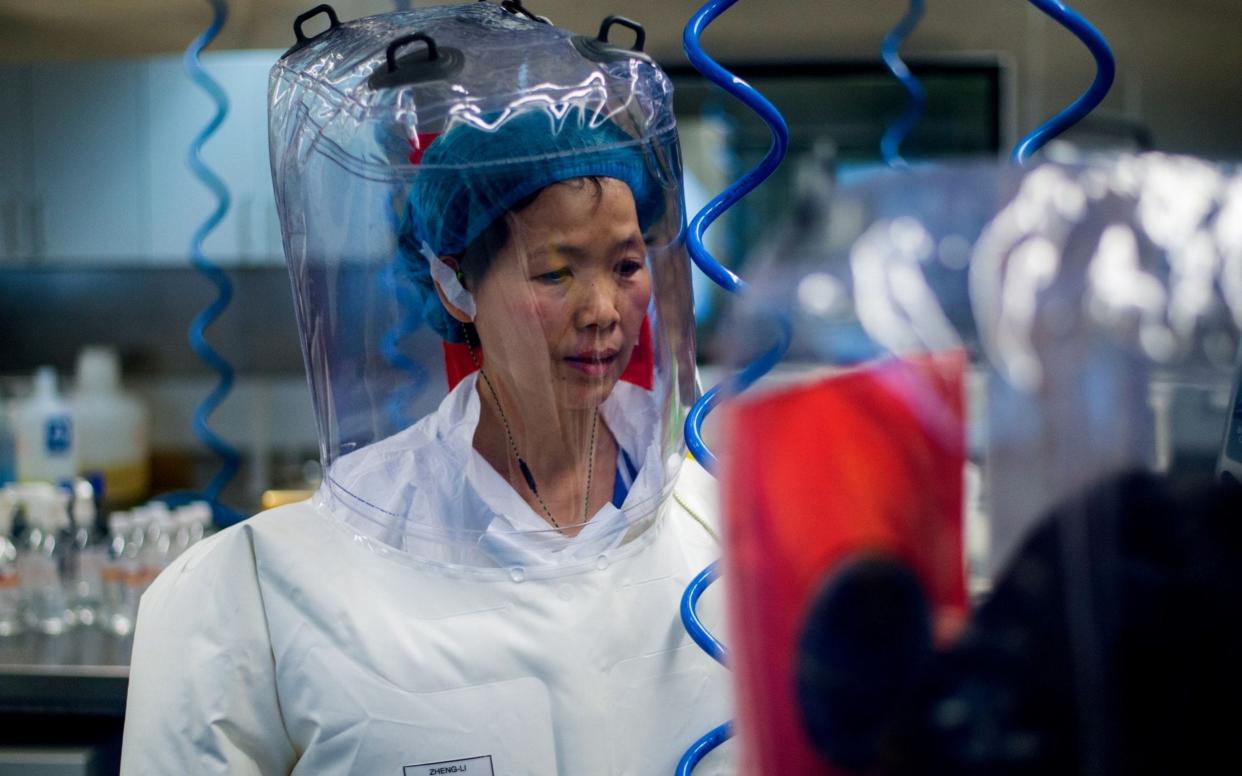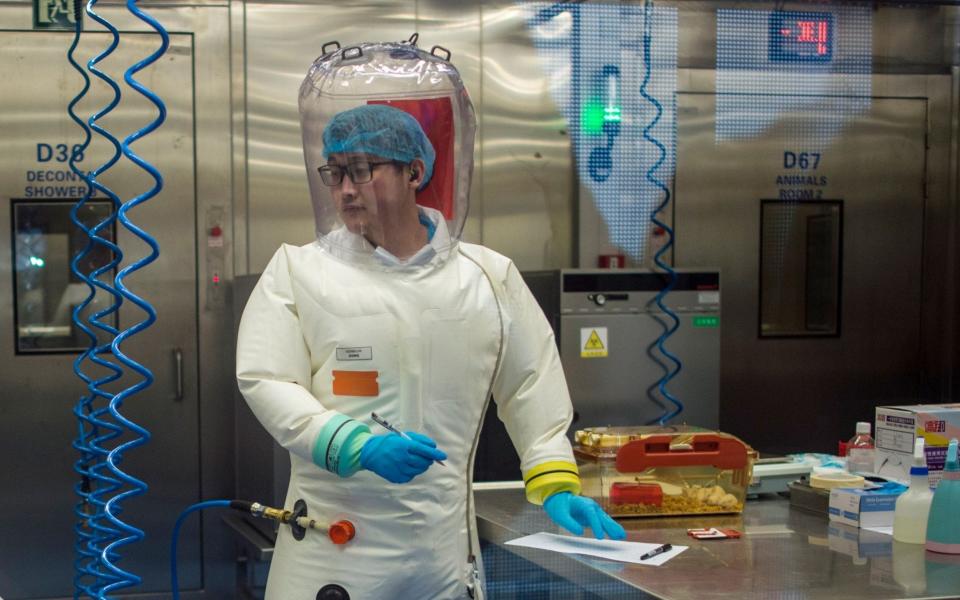The inside story of the Wuhan virus laboratory blamed by President Trump for releasing Covid-19

A state-of-the art facility purpose-built to handle research into the world's most deadly pathogens, the Wuhan Institute of Virology played a crucial role in identifying the virus now known as Covid-19.
It was Shi Zhengli, the laboratory's globally respected expert in the transmission of animal-born coronavirus to humans, who led a team that worked round the clock to establish the cause of the mysterious disease that appeared in Wuhan, a city of 11 million on the Yangtze river 600 miles south of Beijing, in late December.
Now Donald Trump has accused the laboratory of causing the very pandemic it helped identify - to the fury of scientists and Chinese authorities.
“We’re going to see where it comes from,” Mr Trump said at a White House event late on Thursday. “We have people looking at it very, very strongly. Scientific people, intelligence people, and others. We’re going to put it all together. I think we will have a very good answer eventually. And China might even tell us.”
Mr Trump refused to say what, if any, intelligence he had seen suggesting Covid-19 may have originated in the WIV. He wasn't allowed to tell us, he said. The United States Intelligence Community on Friday said it - like most scientists - had ruled out the theory that the virus had been manmade or genetically modified, but did say it was looking into the possibility it escaped as "a result of an accident at a laboratory in Wuhan." That, experts say, is highly unlikely. But far from impossible.

Completed in 2015 and formally opened in 2018, the $44 million laboratory was first planned by China's academy of sciences in 2003 as one of the World Health Organisation's reference labs - one of several facilities around the world used to store samples of the most dangerous diseases known to man. Yuan Zhiming, the director, called it at the time “ a key node in the global biosafety-lab network.”
Initial research focused on Crimean–Congo haemorrhagic fever: a deadly tick-borne virus that affects livestock, as well as Ebola and the West African Lassa virus. But it also became a centre of global research into the potentially devastating consequences of coronaviruses - something Chinese scientists had been alerted to by the Sars outbreak that hit East Asia in the early 2000s.
Groundbreaking research was led by Ms Shi, 55, who led a series of field expeditions to remote locations to work out how such viruses could jump between species. In 2004, she discovered a natural reservoir of coronviruses in bats living in caves in southern China.
Over the following 15 years, she worked closely on animal-to-human transition with leading experts from around the world, including Peter Dazak, the British-American president of the New York-based non-profit EcoHealth Alliance who was one of the first scientists to warn that a "Disease X" could cause a global pandemic.
In 2017, she and her team established that the coronavirus that caused SARs came from bats. It was that expertise that helped her team identify Covid-19 in early January. But the coincidence of a pandemic in the same city as the laboratory raised an obvious, and troubling, question.
“Could they have come from our lab?” she recalled thinking in an interview with the Scientific American in March. Afterall, she and her colleagues had gathered and stored countless samples of bat-borne viruses over the years.
The Wuhan lab is one of a handful in the world with the highest internationally recognised levels of biocontainment security - a standard known as BSL-4. It follows strict protocols: air and water are filtered and treated before leaving it, researchers are obliged to change clothes and shower.
There is no evidence that its strict procedures were breached, and Ms Shi and the laboratory have since issued firm denials that safety protocols failed.
But accidents can happen.
In 2003, an outbreak of Sars in Singapore was linked to an accident in a hospital laboratory when a 27-year-old doctoral student became infected.
That outbreak involved labs cleared for BSL level 3 containment - one level below the standards in place in Wuhan - and an investigation concluded that safety standards had been jeopardised because researchers were forced to work together while another laboratory was being renovated.
The Sars virus was also reported to have escaped from high-level containment facilities in Beijing several times. And it is not clear that Covid 19 was always handled only in Level-4 labs.
"Of course it is possible that is was human error," said a French scientist that visited the Wuhan lab.
"But you must remember that the most virulent coronavirus are considered level BSL3 and other coronavirus are level BSL2."
That would raise the possibility of a leak from another lab - possibly Wuhan's Centre for Disease Prevention and Control, a completely separate institution that is based 300 metres from the Wuhan market initially identified as the source of the virus. The WIV has long been entangled in a web of international tensions over the handling of hazardous pathogens. It was originally the product of a joint venture with France, which has its own BSL-4 laboratory in Lyon.
Michel Barnier, the EU Brexit negotiator who was at that time Jacque Chirac's foreign minister, signed the decree that led to the Wuhan lab's creation in 2004. But French firms got only minor roles in the building of the laboratory, and by the time it opened in 2017 cooperation had collapsed.

Technip, the French company supposed to certify that the building complied with safety standards, refused to do so after pulling out of the project in 2015, and fifty senior French scientists who were meant to move to Wuhan to work there in its first five years of operation never arrived, according to Le Figaro and France Inter, the state broadcaster.
Challenge, a French business magazine, has reported that the project foundered when French military officials refused to supply China with deadly viruses or anti-virus suits in case they were used for biological weapons research.
That was not the end of international cooperation, however. In 2013, a US team filled the gap when the Galveston National Laboratory at the University of Texas, the top pathogens research institution in the United States, began training Chinese researchers for work in BSL-4 laboratories.
The move left some French officials suggesting Paris had lost out to the Americans. James LeDuc, director of the Galveston laboratory, played down the likelihood of an accidental leak from the WIV, saying all such facilities have strict procedures in place although accidents cannot be ruled out.
But the coincidence has been seized upon by conspiracy theorists, and has already done real damage to scientific research even before Mr Trump repeated the suggestion on Thursday.
On April 24, a week before Mr Trump's latest statement, the US National Institute of Health suddenly terminated its grant to Mr Daszak for his research with Shi Zhengli.
And experts have warned scientific cooperation could be further marred by equally implausible counter-allegations levelled at the US.
'It wasn't us'
Chinese officials in Beijing did not appear to rise to President Trump’s bait on Friday but it has repeatedly denied that the Covid-19 virus came from the Wuhan laboratory, with senior foreign ministry officials insinuating on several occasions that it could have originated in the US.
“CPC [Chinese Communist Party] is open, transparent & responsible in #COVID19 response. 2 US experts were in China on WHO-China joint mission in late Jan. Why not ask US experts to locate when the virus first started in the US? American people need answers. The world also has right to know,” tweeted Hua Chunying, the foreign ministry spokesperson on Wednesday.
Her tweet came in response to Mike Pompeo, the US secretary of state, who said: “The CCP needs to be transparent as the world seeks answers to COVID19 and its origins. We don’t know the history. We haven’t been able to get our team on the ground to do the work that it needs to do. China has a responsibility to cooperate.”
In March, Zhao Lijian, another foreign ministry spokesperson, triggered a diplomatic spat with the US when he promoted the conspiracy theory that the United States military could have brought the novel coronavirus to China.

